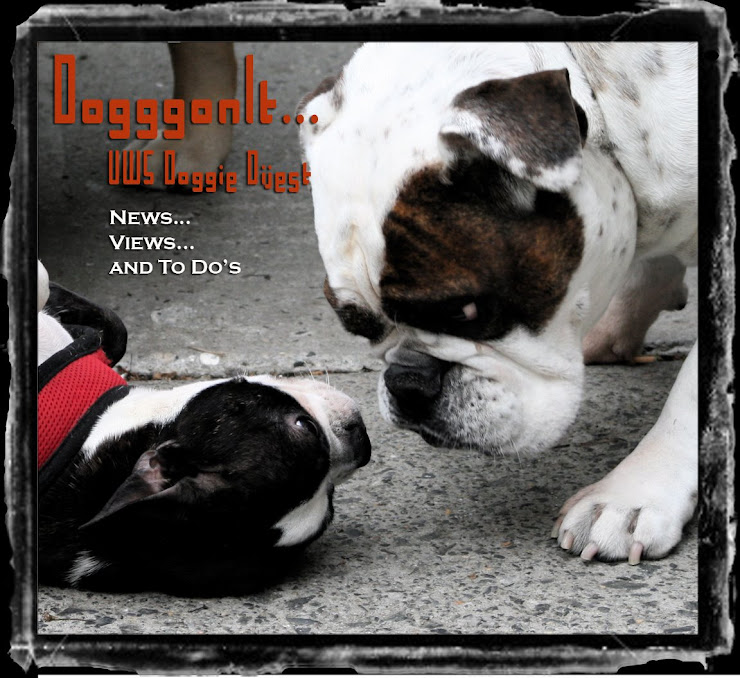I think all this moister is causing more fungus, mold spur issues and reeking havoc for us allergy sufferer's... I myself am a spring and fall 24 hr Zyrtec "prescriber", I seriously couldn't live without it!
I wish it were as easy for Gracie (my 4 yrs old Boston terrier), she also suffers from allergies and unfortunetly it's not as easy to figure out what triggers hers or even how to treat them. I know when she starts licking her paws it's time to get out the Benadryl (a.k.a. Diphenhydramine). Yes...believe it or not, The majority of veterinarians allow the use of Diphenhydramine in dogs as well as cats; this medicine is used quite frequently in canines.
Most common Reasons for using Benadryl for Dogs:
- Insect/flea bites.
- Skin irritation and/or itching.
- Anxiety and Insomnia in dogs.
- Vaccination reactions (example: Lyme disease shot).
- Eye/ear infections.
- Car sickness/vomiting.
- Wasp/bee/hornet stings (includes the inside of the mouth).
- Bites from some snakes.
- Asthma, as well as inhalant allergies (such as pollen or dust).
- Hay fever, runny/stuffy nose, and coughing/sneezing.
- Muscle tremors.
- Irritation at the dog's tail base.
- Bodily knots or lumps with fluid.
Benadryl absorbs and acts fast. Often, the effect can be seen within thirty minutes. However, in certain instances, it may take up to a week to see a notable result. Like any medication you need to take precasion and make sure you use the proper dosage and watch your pet to make sure they are not suffering from side effects and always consult with your vet.
The Safety of using Benadryl for Pets
Generally, Diphenhydramine (Benadryl) is exceptionally safe for dogs; however, there are a certain number of serious precautions:- Diphenhydramine should not be administered to dogs with certain conditions: cardiovascular disease, glaucoma, prostatic disease, and hyperthyroidism.
- Diphenhydramine (Benadryl) may not be appropriate for a puppy. If you do have a puppy, please be sure to consult with your veterinarian first.
- Only the pure med is safe for dogs, where the active ingredient is only Diphenhydramine. The Decongestant or Colds/Sinus versions aren't acceptable.
- Liquid Benadryl is high in alcohol content and is not safe for most animals.
- Children's Benadryl may be alcohol and sugar free; however, it contains sodium, and this could be detrimental to dogs with certain health concerns.
- It shouldn't be used simultaneously with decongestants and painkillers. It can also interact with other medicines, and possibly be fatal. Should your pet be taking any other types of medication - it's important that you first ask your veterinarian about using Benadryl. Generally, Diphenhydramine is considered safe for your pet when taking flea and heartworm tablets, as well as steroids.
- It's extremely important that the prescribed dosage is not exceeded.
Benadryl Dosage for Pets There're 2 ways for determining the proper dosage when administering Benadryl to a pet, and I will state them below:
1. Benadryl (Diphenhydramine) is administered at a dosage of 1 milligram per 1 pound of the animal's weight 3 times per day (i.e. every 8 hrs). An example: a 30 lb dog should be given 30 mg of this medication three times per day.
2. Dogs are categorized by three weight class categories; the med is taken 3 times daily, every 8 hours:
- 30 pounds and under pets: 10mg
- 30-50 pound pets: 25 mg
- 50 pounds and over pets: 50mg
Side Effects in Pets
Common side-effects include: drowsiness and mild disorientation. Others include: dry mouth, diarrhea, vomiting, urinary retention, agitation, problems breathing, and lack of appetite. Some of the side-effects may be prevented. To prevent your pet from vomiting, give the medication with food. And to prevent appetite disturbances, feed your pet before administering the medication. In case of any side-effects, contact a veterinarian.
How to Administer Benadryl
I suggest placing the tablet or capsule into a teaspoon of peanut putter, it works every time for Gracie, however you can also try bits of meat; use liquid gel capsules that have been dipped into a tasty treat; rectal suppository; an injection. Most commonly, Diphenhydramine is taken orally, in tablets or capsules. Please contact your veterinarian to find out further information on the uses concerning Benadryl for dogs, and whether you can use it for your pooch.
Sometimes Paw licking can also be due to other more serious conditions like internal bacterial infections, severe anxiety, stress or even depression. I have found another source and solution to Gracie's paw licking at this site Here you'll find a more though-out resoureful pool of info to help you with your understanding of why your dog may be licking it's paws. These people have created a product called DermaPaw as a last resort, pure necessity for helping their own dog, they make no claims, but ratter offer another alternative. I feel it can only help, you be your own judge, after all... you know your Dog best!
If you have any further input you would like to share feel free to leave a comment!


